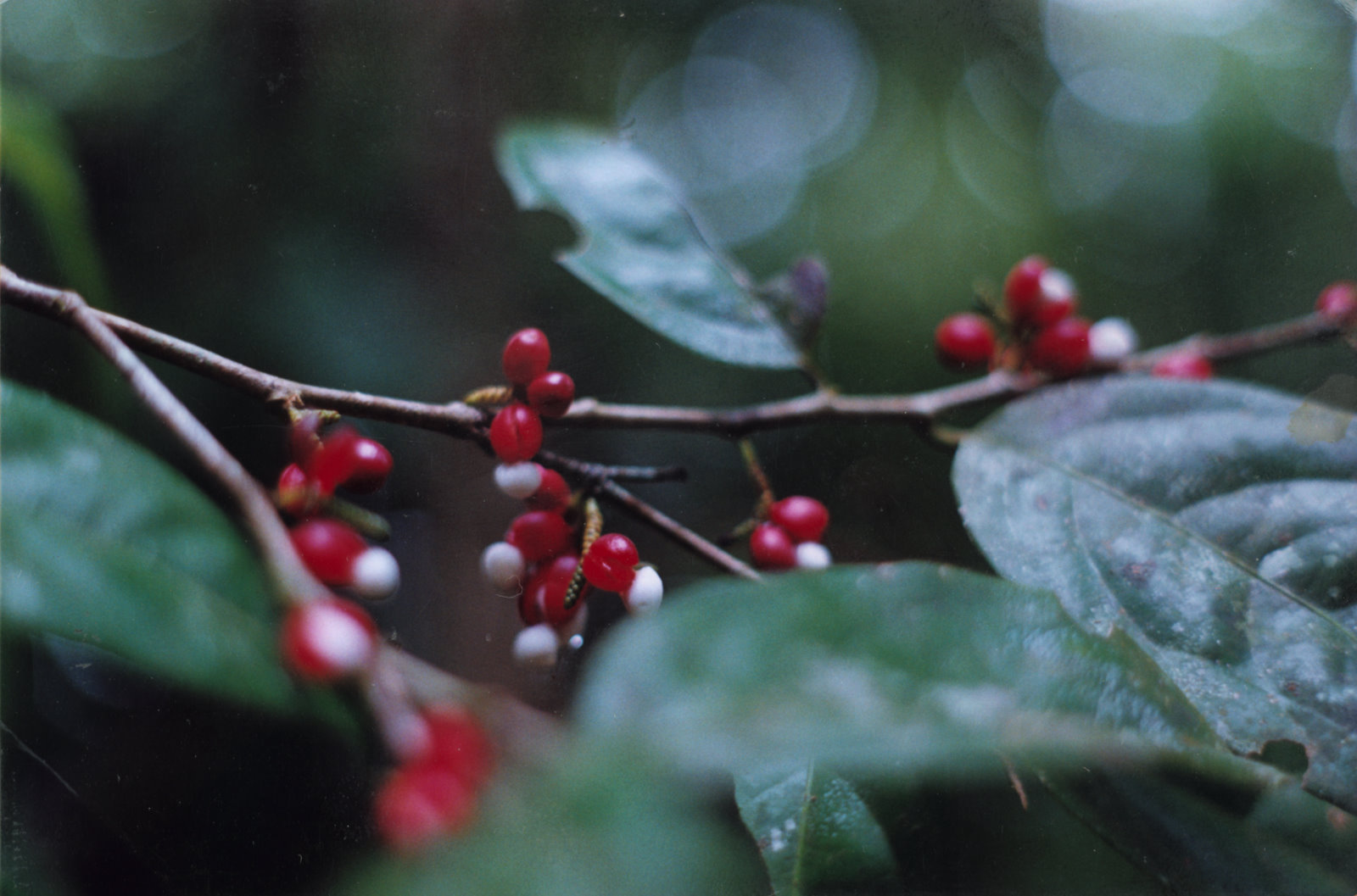Lacistema aggregatum (Bergius) Rusby
Flacourtiaceae
Common evergreen understory tree (5-10 m) and an inconspicuous component of the primary forest until a harvest of fruits takes place. Lacistema‘s unremarkable crown then receives a splash of color as ruby-red capsules and snow-white ariled seeds cloak its branches. Requiring more light than other understory trees, this species inhabits the less-densely vegetated patches of primary forest typical of the region’s drier slopes and hills.
Description: Lacistema is a small tree whose trunk does not exceed 13 cm in diameter. The small bole is erect and covered with rough, light colored, pale green or creme bark. A moderate number of branches and leaves produce a fairly open, airy crown. Leaves (13 cm by 4.5 cm) are simple, alternate, smooth, and entire. They are arranged horizontally and in two tiers, along the brown, slightly zig-zagging twigs. With short petioles (5 mm), elliptical blades, and moderately long drip tips, the leaves are quite ordinary in appearance. However, when observed from below and with the light shinning through them, dark secondary leaf veins can be seen in the blades, pinnately arranged and curving markedly toward their distal ends – a less common characteristic that is useful for purposes of identification.
By January, flower buds begin to appear in the form of small, cord-like, spikes or catkins growing in sessile clusters from leaf axils. Numbering from one to five spikes per axil, these scale covered structures eventually reach about 1.5 cm in length (while remaining only 0.2 cm in diameter). Soon the spikes yellow, and extremely minute but numerous blossoms (<1 mm) emerge from underneath the equally small scales. Flowering is a precisely timed and well synchronized event, occurring annually in late March and early April.
Soon thereafter, round, knobby fruits begin to grow from the sides of the same spikes, numbering from one to about 6 per inflorescence. Each fruit matures as an attractive, ruby-red, glossy capsule (1 cm) that splits longitudinally and releases a spongy, snow-white aril. Dangling outside the capsule from a tough connecting fiber, the aril contains a single, brown, ovoid seed (0.5 mm). Harvests appear to follow a two year cycle, with large crops generated by all individuals in 1991, 1993, and 1995. During off years, though flowering still takes place, only a few, widely scattered fruits are in evidence. Harvests occur consistently in May and early June. The spectacle presented by periods of prolific fruiting, when the green of Lacistema foliage combines with the vivid red and white colors of the twig-hugging capsules, is a truly memorable rainforest event.
Similar Species: Unfortunately, Lacistema is a difficult species to identify, thanks to its common leaf type as well as the stature it shares with other understory trees and saplings. The best clue available, for sterile samples in the field, is the curvature displayed by its leaf veins. Seen silhouetted against the back-lit blades, the distally bending secondary ribs form a distinctive and clearly evident dark pattern that is not usually seen in arboreal foliage. Between December (and sometimes as early as October) through June, some form of fertility may be present, facilitating the identification of this species.
Natural History: Flowers are pollinated by small insects. The ariled seeds are attractive to squirrel and white-faced monkeys and to many species of birds as well. Lacistema appears to be an extremely adaptable tree, for it thrives in primary and secondary, sea level through montane, forests.
Uses: Conceivably, Lacistema could be employed as an ornamental, given its lavish displays of brightly colored fruits as well as its ability to endure high levels of insolation.
Distribution: Lacistema frequents hilly terrain, like that found along the path to Puerto Escondido. Its fondness for light also makes this species a common component of trail-side vegetation. Often found in the forests of Costa Rica’s Pacific slope, Lacistema has been seen in the Osa Peninsula, the Isla del Cano, Carara and Arenal. It ranges from Mexico and the West Indies to Colombia, Venezuela, and Peru.
Images: Fruit&Leaf Fruit


